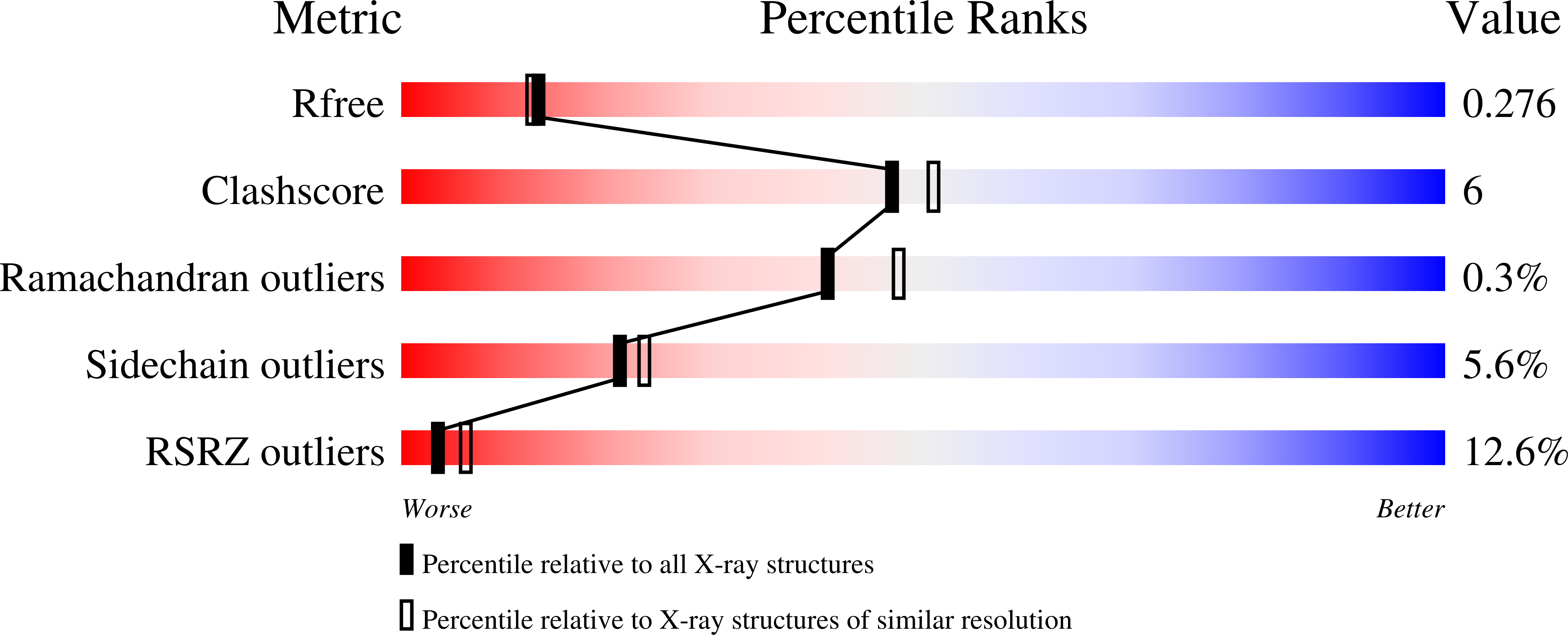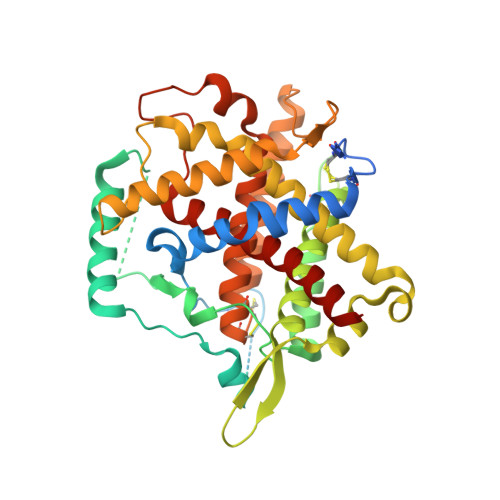Crystal structures of human Ero1-alpha reveal the mechanisms of regulated and targeted oxidation of PDI
Inaba, K., Masui, S., Iida, H., Vavassori, S., Sitia, R., Suzuki, M.(2010) EMBO J 29: 3330-3343
- PubMed: 20834232
- DOI: https://doi.org/10.1038/emboj.2010.222
- Primary Citation of Related Structures:
3AHQ, 3AHR - PubMed Abstract:
In the endoplasmic reticulum (ER) of eukaryotic cells, Ero1 flavoenzymes promote oxidative protein folding through protein disulphide isomerase (PDI), generating reactive oxygen species (hydrogen peroxide) as byproducts. Therefore, Ero1 activity must be strictly regulated to avoid futile oxidation cycles in the ER. Although regulatory mechanisms restraining Ero1α activity ensure that not all PDIs are oxidized, its specificity towards PDI could allow other resident oxidoreductases to remain reduced and competent to carry out isomerization and reduction of protein substrates. In this study, crystal structures of human Ero1α were solved in its hyperactive and inactive forms. Our findings reveal that human Ero1α modulates its oxidative activity by properly positioning regulatory cysteines within an intrinsically flexible loop, and by fine-tuning the electron shuttle ability of the loop through disulphide rearrangements. Specific PDI targeting is guaranteed by electrostatic and hydrophobic interactions of Ero1α with the PDI b'-domain through its substrate-binding pocket. These results reveal the molecular basis of the regulation and specificity of protein disulphide formation in human cells.
Organizational Affiliation:
Division of Protein Chemistry, Post-Genome Science Center, Medical Institute of Bioregulation, Kyushu University, Maidashi, Higashi-ku, Fukuoka, Japan. inaba-k@bioreg.kyushu-u.ac.jp















